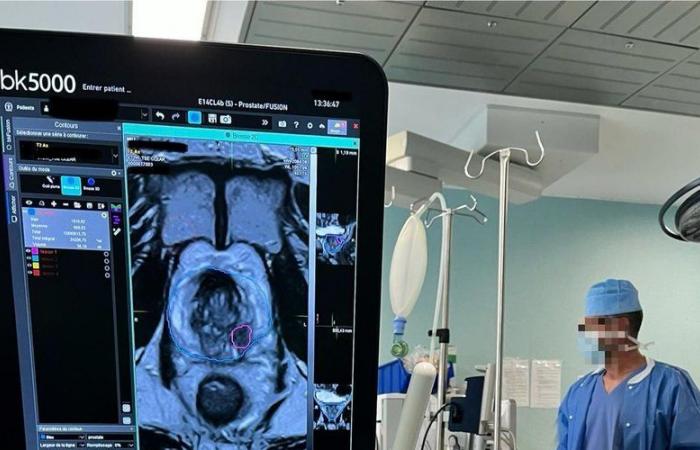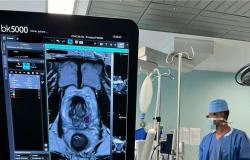
the essential
The Cahors hospital has invested in a new state-of-the-art ultrasound machine. The equipment allows very precise prostate examinations to be carried out in cases of suspected cancer. Previously, patients who needed this examination had to consult the Toulouse oncopole.
It’s a small revolution in the corridors of the Cahors hospital. In June 2023, the teams received a new state-of-the-art ultrasound machine, the BK5000. This device, a screen on a wheeled stand, was installed in an operating room. It is equipped with five probes, the smallest for the testicles, the largest for the abdomen. Doctor Ahmed Mansouri, head of the urology department, rubs his hands: “It’s very interesting for us because we now carry out much more precise examinations.” Patients who suspect prostate cancer are particularly concerned.
“Using this new equipment, we are performing a transperineal prostate biopsy with MRI fusion. This means that when there is a suspicion of a lesion, we use this tool to check it much more precisely. than before because the areas to be inspected are now clearly identified and visible on the screen Before, we carried out this operation blindly”, explains the urologist. The difference is also that before, the surgeon passed through the rectum with a needle. From now on, it passes through the perineum, which considerably limits the risk of infection and bleeding.
A 5-minute routine exam
On the screen, on the ultrasound machine, the areas studied are demarcated by colors: the prostate is surrounded by blue, the suspicious lesion is in purple. “We have a classification system out of 5: from 4, it is a suspicious and cancerous lesion,” adds the practitioner. The diagnosis given to the patient is also more detailed. No need for him to go to the Toulouse oncopole where the closest ultrasound machine of this type was then located. As before, the examination remains possible under local or general anesthesia.
It took several months for caregivers to master the tool. “We had to learn to manage this technique. A trainer came to accompany us for several days. When at the start it sometimes took more than an hour to carry out the procedure, today we are now familiar with it, it’s an exam routine which takes us 5 minutes”, specifies the professional. He and the urologists in his department operate on around ten patients per week. But the equipment which cost between 100,000 and 200,000 euros is also used to carry out abdominal ultrasounds, nephrostomies (to examine the kidneys) and laparoscopies (to examine the abdomen without opening the stomach). “We cover the range of our surgical needs and what’s more, we are more independent, we no longer need to bring in a radiologist during the operation,” summarizes Doctor Ahmed Mansouri. The patient also wins.





